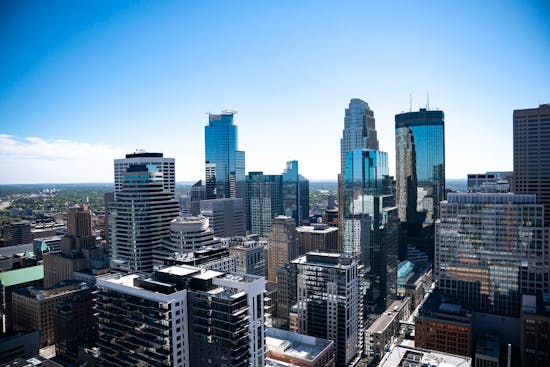Opinion editor's note: Star Tribune Opinion publishes a mix of national and local commentaries online and in print each day. (To contribute, click here.) This article is a response to Star Tribune Opinion's June 4 call for submissions on the question: "Where does Minnesota go from here?"
•••
As Minneapolis emerges from a year of twin pandemics — COVID-19 and the ongoing pandemic of systemic racism — we are presented with a rare opportunity to reimagine and rebuild our downtown. It's time to create a new vision of downtown Minneapolis that starts with equity and justice and expands with abundance, beauty, joy, vibrance, innovation and belonging. But where do we start?
We start by recognizing that downtown was never designed for everyone. Systemic racism has shaped our city, causing disinvestment, economic exclusion and loss of autonomy for Indigenous and Black people, communities of color and women. These effects are visible today with empty storefronts and lifeless streets. COVID-19 has driven businesses out of our city center, but the issues were present long before the pandemic. We need to rebuild our downtown, but this time for everyone.
In the words of urbanist Jane Jacobs, "New ideas need old buildings." We can learn from the past, firmly face the future and repurpose existing structures to support innovative urban development, create affordable spaces for diverse users and foster a sense of belonging for residents. We can leverage our existing building stock to promote sustainability, small-business growth and long-term activation.
At our organizations, Imagine Deliver and the African American Leadership Forum (AALF), we believe that people experiencing problems firsthand have the best, most innovative solutions. An insights- and user-centered design firm, Imagine Deliver asked more than 2,000 Hennepin County residents about the future of downtown, and they imagined something more beautiful than could be captured in any comprehensive plan:
- They imagined a downtown that is built to be an affordable and attractive neighborhood where everything is available within walking distance, and to which people want to travel (from everywhere) to spend their leisure time.
- They imagined a place of belonging and guaranteed safety, especially for Black and brown teens, elders, young women and gender-expansive people, where everyone is welcome and cared for on the streets and in the skyways.
- They imagined a healthy city heart, where its main arteries are designed for public transportation, accessibility and all types of pedestrians, promoting both sustainability and healthy living.
- They imagined a city that is green and verdant, integrating the most climate-ready urban design with food security to grow food, chill in nature, and experience abundance for free.
- They insisted that the Minneapolis of the future leverages mental health providers, smart use of lighting and sound, and human density to promote public safety without relying on traditional policing methods.
- They imagined a downtown core that encourages local BIPOC businesses with grants, widely available capital, and affordable space to start, grow and scale businesses.
Our residents want a downtown that builds for geographic justice, addressing the heat island effect while providing affordable housing, retail and community spaces.
Minneapolis, in the future, will be a city full of people and families at play, participating in noise, music, art, green space and rest. It is a 24-hour neighborhood with a nightlife that would make Prince proud.
Both Imagine Deliver and AALF share a commitment to fostering collaboration and belonging as we work toward rebuilding our new downtown. In fact, Imagine Deliver has created a free resource for those interested in community-led design, the Get Started Guide for Gathering Community Insights. This resource empowers individuals to uncover their unique roles in revitalization efforts and connect with others to make a lasting, positive impact in their communities.
Rebuilding a city for everyone will require everyone to participate: building owners, young people, elders, artists, philanthropists, entrepreneurs, organizers and public officials. It will require our city, deeply entrenched in the pain and trauma of racial division, to heal itself, for good — and for real — along the way.
Our city leaders use words like "rebuilding trust" and "repairing harm." And when we talk about "rebuilding trust" and "repairing harm," we also know there are actual, tangible next steps involved.
Minneapolis is fully capable of rebuilding our city from the core, creating a new heartbeat that reflects the beauty of our people. But we need to start by prioritizing action on community insights, enacting policy changes, actively sharing decisionmaking responsibilities, and then showing our "receipts."
Kate Downing Khaled is founder and managing director of Imagine Deliver. Adair Mosely is CEO of the African American Leadership Forum.




